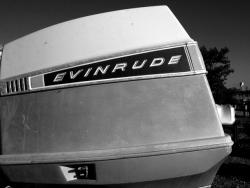The Watkins Woolen Mill is among the best preserved examples of a Midwest woolen mill in nineteenth-century United States. Its machinery for preparing, spinning, and weaving wool reflects the existence of well-established textile industry in the country. It was designed and built by Waltus L. Watkins (1806-1884), a machinist and master weaver from Frankfort, Kentucky, who began operating his mill in 1861 in Clay County.
Mechanical


The Voyager explorers, which provided scientists and the world with the first detailed pictures of faraway planets, were designed and tested during 1972 to 1977. The two most intelligent machines ever built in the NASA space program, the explorers were launched from Cape Canaveral, Fla., in 1977. Voyager 2 was launched first on August 20, followed by Voyager 1 on September 5.

The Cairo is the sole survivor of the fleet of river gunboats built by the Union during the Civil War with the object of controlling the lower Mississippi River. Designed by Samuel Pook and built by James B. Eads, it saw limited battle and was sunk on the Yazoo River in 1862 by newly developed electronically detonated mines, becoming the first craft ever sunk by this predecessor to torpedo technology. The 175-foot ironclad vessel had 13 guns.

The USS Albacore (AGSS-569) represented a radical change in submarine design. The hull was designed with underwater speed as the prime requirement, and it was built with newly developed high-strength steel (HY-80). In addition to these two major innovations, the Albacore served as a test vessel for many new designs in submarine technology so that they could be refined before implementing them into the fleet. Among them was the testing of various control designs and correlation of actual sea-trial performance with that predicted in tow-tank tests.
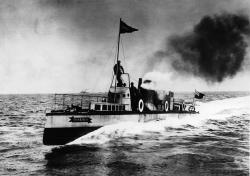
The Turbinia was the world's first turbine-driven ship. It attracted worldwide attention at the 1897 Spithead Naval Review by traveling more than 34 knots. This remarkable performance accelerated the acceptance of the steam turbine as an alternative to the steam reciprocating engine on ships as well as for central electric light and power stations. Sir Charles A. Parsons (1854-1931) invented (1884), developed, and promoted the steam turbine, as well as the design of the Turbinia. For this, he is considered among the outstanding technological innovators of all time.
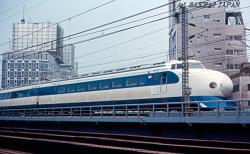
State: Tokyo-toZip: 100-0005Country: JapanWebsite: https://www.asme.org/about-asme/who-we-are/engineering-history/landmarks/211-tokaido-shinkansenCreator: Shima, Hideo
In 1964, Shinkansen (which means "new trunk line" and is also known as the bullet train) between Tokyo and Shin-Osaka became the world's first high-speed railway system, running at a maximum business speed of over 200 km/h (130-160 mph).
he Automatic Temperature Control System was named as a Historic Mechanical Engineering Landmark in 2008. Warren S. Johnson came up with the idea for automatic temperature control while teaching at Normal School in Whitewater, Wisconsin in the 1880's. Originally, janitors would have to enter each classroom to determine if it was too hot or cold and then adjust the dampers in the basement accordingly. Johnson sought a way to end, or at least minimize the classroom interruptions of the janitors and increase the comfort level of the students.

New OrleansState: LACountry: USAWebsite: http://www.asme.org/about-asme/history/landmarks/topics-m-z/rail-transportation---2/-101-st--charles-avenue-streetcar-line-%281835%29, https://www.asme.org/getmedia/40ef6e7c-697d-4f77-8daa-059a37f698b3/101-St-Charles-Avenue-Streetcar-Line-1835.aspxCreator: Perley A. Thomas Car Company
The St. Charles Avenue Streetcar Line is the oldest surviving interurban-urban passenger rail transportation system in the United States. Originally incorporated as the New Orleans Carrollton Rail Road in 1833, service began in 1835. A variety of motive power had been used including horses, mules, overhead cable, steam engines, and ammonia engines before electrification in 1893. The 900-series cars presently in service were designed and built by the Perley A. Thomas Car Company of High Point, North Carolina, in 1923 to 1924.

The two 3,500-hp steeple compound Unaflow steam engines powering the S.S. Badger represent one of the last types of reciprocating marine steam engines. Built by the Skinner Engine Company, most Unaflow engines are single expansion. These feature tandem high- and low-pressure cylinders separated by a common head. The Badger's four Foster-Wheeler Type D marine boilers, which supply 470-psig steam to the engines, are among the last coal-fired marine boilers built.

The SS Jeremiah O'Brien, an emergency cargo vessel of the type EC2-S-C1 better known as Liberty Ships, is one of two operative survivors of 2,751 ships, the largest fleet of single class ever built. The other is the SS John W. Brown, now in Baltimore (not operative at the time of the landmark designation). Between March 1941 and November 1945, eighteen US shipyards produced 2,751 ships. The design stressed minimum cost, rapidity of construction, and simplicity of operation. The original design and configuration have not been altered.
Innovations
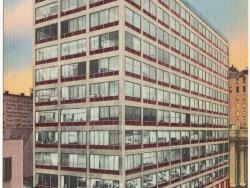
The use of heat pumps for the heating and cooling of the Commonwealth Building, initiated in 1948, was a pioneering achievement in the western hemisphere. The theoretical conception of the heat pump was described in a neglected book, published in 1824 and written by a young French army officer,…
Read More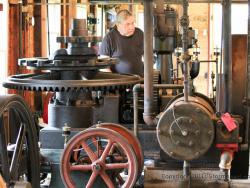
Early internal combustion engines produced only a few horsepower and were unable to replace steam engines in most applications until about 1890. By then, they were powerful enough for most portable or remote locations and many small manufactures. By 1900, they were replacing reciprocating steam…
Read More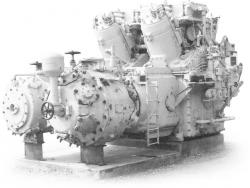
This compressor was a product of the combined technology and design heritage of both the C. & G. Cooper Company of Mount Vernon and the Bessemer Gas Engine Company of Pennsylvania, which had merged in 1929. Ralph L. Boyer, the chief architect of the GMV, worked for Cooper-Bessemer from 1926…
Read More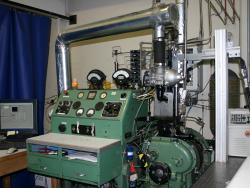
The Cooperative Fuel Research (CFR) engine is used extensively throughout the world for testing, research, and instruction in the performance of fuels and lubricants for the internal combustion engine. Principal design work on this prototype engine was accomplished by engineers of Waukesha Motor…
Read More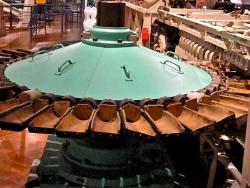



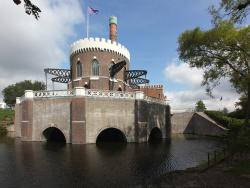
This is one of three nearly identical pumping stations that drained the Haarlemmermeer (Haarlem Lake), 1849- 52, then continued to maintain the polder's water table for more than 80 years. The Haarlemmermeer area covers 45,000 acres (about 70 square miles) in a triangular region between the…
Read More
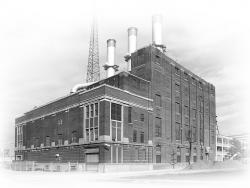
The concept of heating a number of buildings in the core area of a city from a single heating plant was introduced into the United States by Birdsill Holly at Lockport, New York, in 1877. The gain in thermal efficiency of a single large steam plant over a series of small isolated boilers led to…
Read More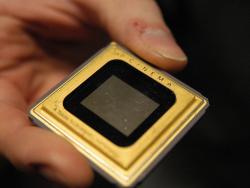

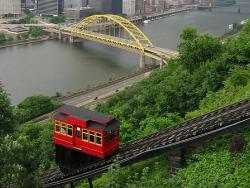
Designed by Sam Diescher, son-in-law of the Monongahela's designer John Endres, the Duquesne Incline opened May 20, 1877, as the second of seventeen built and operated in the Pittsburgh area. It has operated with only minor interruptions for the last one hundred years. A preservation group from…
Read More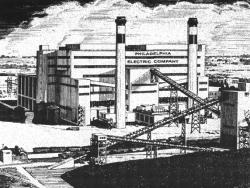
Operated by the Philadelphia Electric Company (PECO), now known as Exelon Corp., Eddystone Station Unit #1 is a 325 MW pulverized-coal-fired plant that pushed the technology of steam-electric generating plants. When built in 1960, engineers sought to make a more efficient plant using higher…
Read More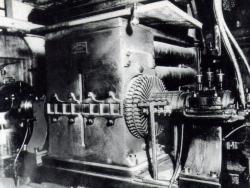
This dynamo, connected directly to a high-speed steam engine, was one of six that produced direct current at Thomas A. Edison's electric power station at 257 Pearl Street in New York City. The Pearl Street Station was the prototype for central station power generation. Edison set out in 1878 to…
Read More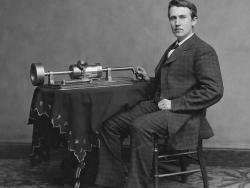
Edison's simple and unprecedented instrument allowed for the first time the permanent recording and reproduction of sound, especially the human voice. On December 6, 1877, Edison put tinfoil around the cylinder, turned the handle of the shaft and, shouting into one of the diaphragms, recorded a…
Read More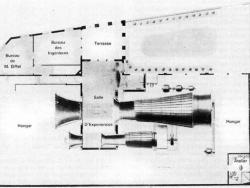
Late in life, the renowned structural engineer Gustave Eiffel (1832-1923) embarked on aeronautical research. Reliable data and repeatable research methods were rare in the early 1900s, but Eiffel brought an engineer's discipline to the field. In the process, he produced the most accurate…
Read More
